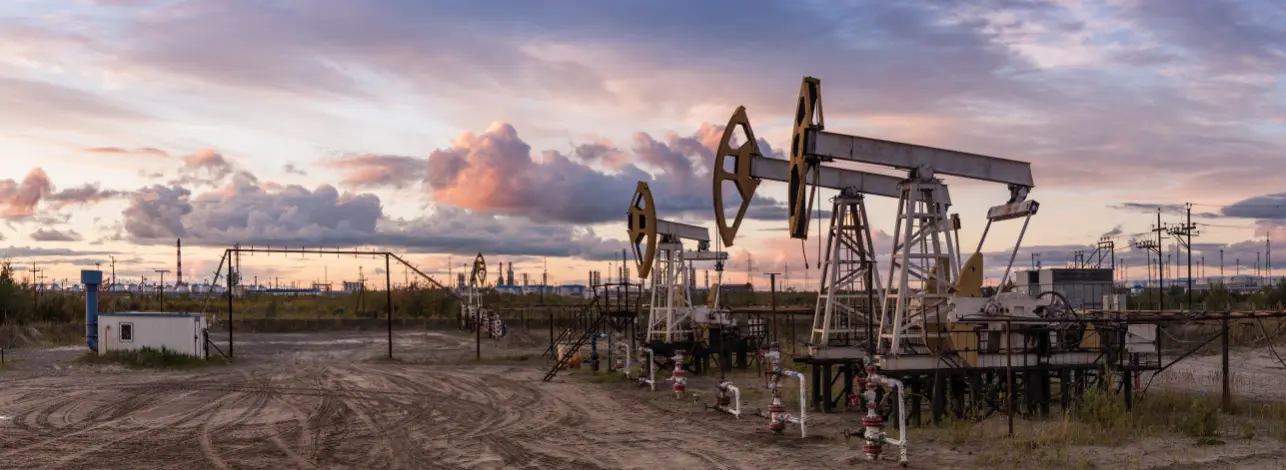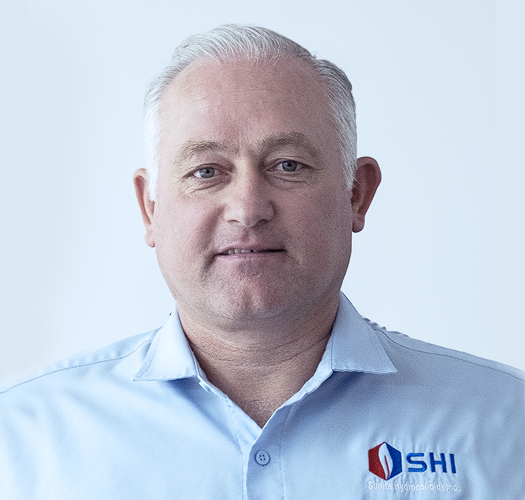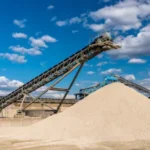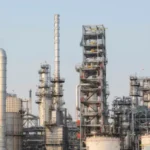What Are Cementing Additives and Why Are They Crucial in Well Construction?

Oil and gas wells don’t succeed on drilling alone. The real test begins when it’s time to secure the casing and seal off formation zones. That’s where cementing is needed, forming a protective sheath between the wellbore and casing to prevent fluid migration, support structural integrity and protect against pressure shifts.
Cementing additives are chemical agents mixed into cement slurries to fine tune its behavior, controlling fluid loss, adjusting rheology and improving bonding strength. Most cementing additives are chemical compounds designed to achieve specific performance characteristics. These chemical additives are the difference between a well that holds and one that fails.
Sunita Hydrocolloids Inc., a USA based leader in oilfield chemical manufacturing, delivers high performance wellbore cement additives engineered for tough environments and are compatible with a wide range of cement formulations including those based on Portland cement. From fluid loss control to dispersants and retarders, Sunita’s portfolio is built to support well integrity and zonal isolation across the most demanding formations. In this blog, you will learn about oilfield cement additives in detail and how they support reliable well construction.
What Are Cementing Additives?
Cementing additives are chemical agents blended into cement slurry to regulate its behavior during well construction. While base cement provides the bulk material, it is the additives that enable it to perform under pressure. Without them, the slurry may set too fast, lose water uncontrollably or fail to bond properly, putting well integrity and zonal isolation at risk.
Downhole conditions vary wildly. High temperatures, extreme pressures and reactive formation fluids demand a slurry that’s customized, not just mixed. That’s where additives are required. They help control:
- Setting time to match pumping schedules
- Viscosity and rheology for smooth placement
- Fluid loss to prevent dehydration and formation damage
- Strength development for long term durability, including early strength development and rapid compressive strength development
- Slurry stability to avoid segregation or free water
The effectiveness of cementing additives depends on proper mixing with the mixing water or mix water and many additives are available in liquid form for ease of use.
Types of Cementing Additives and Their Functions
Cementing additives need to be customised as per specific requirements and well conditions. Each well presents its own set of challenges such as temperature swings, pressure spikes, reactive formations and the slurry needs to be ready to deal with these. Different cement systems are designed to address these challenges and additives are commonly employed in significant quantities to achieve the desired performance.
That’s where additive selection becomes critical. Here’s how Sunita Hydrocolloids helps operators stay ahead with purpose built solutions.
1. Retarders
Retarders slow down the cement setting process, giving crews enough time to place slurry accurately, especially in deep wells or high temperature zones where premature setting can derail operations. The selection and dosage of retarders depend on bottom hole circulating temperatures to ensure proper set times. Common retarders include lignosulfonates and hydroxycarboxylic acids which regulate hydration kinetics.
Sunita’s retarder additives are engineered for consistent performance, ensuring extended pumpability and controlled set times across complex formations while also helping to maintain optimal compressive strengths of the set cement.
2. Accelerators
Accelerators do the opposite. They speed up setting and boost early strength. This helps reduce waiting on cement (WOC) time and keeps rig schedules tight. Calcium chloride (CaCl₂) is a widely used accelerator and sodium chloride is another chemical additive sometimes used as an accelerator in well cementing operations. Sunita’s advanced formulations go further.
Our cement accelerators strike the right balance between fast setting and long term integrity, even in cold or low pressure environments.
3. Fluid Loss Control Agents
Fluid loss occurs when water escapes from the slurry into the formation, weakening the cement and risking zonal isolation; this is why fluid loss additives are critical in cementing operations. Additives like cellulose derivatives and latex polymers, which are commonly used as fluid loss additives to enhance fluid loss control properties, help retain water and maintain slurry stability.
Sunita’s fluid loss control solutions are designed for varied permeabilities, minimizing formation damage and supporting well integrity. Effective fluid loss control agents help prevent excessive slurry dehydration, which can otherwise compromise slurry stability and pumpability.
4. Dispersants
Dispersants reduce slurry viscosity and improve flow, promoting turbulent flow and acting as friction reducing additives, which makes it easier to pump and place. They also prevent particle clumping, helping maintain optimal flow properties and rheological properties of the slurry, ensuring uniform distribution. Polynaphthalene sulfonates are commonly used and Sunita’s dispersant additives deliver reliable rheology control for high density slurries. They enhance slurry homogeneity and pumpability.
6. Defoamers
Foam in cement slurry can lead to air pockets and reduced strength. Defoamers eliminate entrained air by reducing surface tension in the cement slurry, which improves density. Silicone based compounds are effective and Sunita’s defoamer products ensure clean, bubble free slurry for consistent performance.
7. Extenders and Weighting Agents
Extenders like bentonite reduce slurry density for low pressure zones while weighting agents such as barite and other heavy weight additives are also used to increase slurry densities for high pressure wells. Sunita’s density modifiers help operators fine tune slurry weight, ensuring wellbore stability and pressure control across diverse drilling conditions.
Each additive plays a role in protecting the well, improving placement and locking in long term performance. Sunita Hydrocolloids brings deep formulation expertise and a full portfolio of oilwell cement additives built for real world oilfield demands.
Why Cementing Additives Are Crucial in Well Construction
Cementing isn’t just about filling the gap between casing and formation, it’s about locking in well integrity for the long haul. The cement sheath acts as a barrier, delivering zonal isolation, preventing fluid migration and shielding the casing from corrosive fluids and mechanical stress. But raw cement alone can’t handle the extremes of oilfield environments.
Cementing additives are what make the slurry work. They help ensure:
- Controlled setting time so slurry doesn’t harden before placement
- Stable rheology for smooth flow and uniform coverage
- Resistance to high temperatures, salinity and pressure
- Strong bonding and compressive strength for long term durability
- Minimal fluid loss to avoid formation damage and channeling
Without the right additives, slurry can segregate, set too fast or fail to bond, leading to poor isolation, casing corrosion and costly remediation. That’s not a risk worth taking.
Sunita Hydrocolloids delivers specialty cement additives built for performance. Our retarders, accelerators, fluid loss agents and dispersants are formulated to meet the demands of deep wells, reactive formations and tight drilling schedules.
Operators rely on Sunita’s cementing portfolio to:
- Reduce non productive time through optimized slurry placement
- Improve safety and compliance by preventing gas migration and casing failure
- Support long term well productivity with durable cement bonds
Sunita Hydrocolloids’ Expertise and Solutions
With over 40 years of chemical manufacturing behind it, Sunita Hydrocolloids Inc. has built a reputation for precision, reliability and innovation in oilfield cementing additives. Our patented technologies and advanced formulations are designed to meet the demands of modern well construction. Whether it’s controlling fluid loss, adjusting slurry rheology or extending pumpability in high temperature zones, Sunita offers custom formulation capabilities to match unique well conditions.
From our USA based distribution center in Houston, we ensure fast delivery and competitive pricing across North and South America. Our logistics team works closely with field operations to keep projects moving without delays. What sets Sunita apart is our dedicated technical support.
Our experts collaborate with operators to optimize slurry designs, troubleshoot field challenges and recommend additive combinations that improve well integrity and zonal isolation. Whether you’re planning a deep high pressure well or working in low permeability formations, Sunita Hydrocolloids is ready to support your cementing program with proven chemistry and responsive service.
Industry Trends and Sustainability
Operators are under growing pressure to meet performance targets while staying compliant with stricter environmental regulations. That’s driving demand for a low VOC, eco conscious cementing additives market that delivers results without compromising sustainability. Additives that reduce fluid loss, improve slurry rheology and support zonal isolation are now expected to perform in unconventional wells, high temperature zones and reactive formations.
Sunita Hydrocolloids is leading this shift with ongoing R&D focused on cleaner chemistries and smarter formulations. Our oil well cement additives are designed to meet evolving field demands while aligning with sustainability goals. From biodegradable dispersants to low toxicity retarders, we are helping operators reduce environmental impact and stay ahead of compliance.
Conclusion
Cementing additives are the backbone of reliable well construction. They help control slurry behavior, protect casing and lock in zonal isolation, making or breaking long term well integrity.
Sunita Hydrocolloids brings over four decades of oilfield expertise to the table. Our cementing additives are built to perform under pressure from deep wells to reactive formations. Whether you need retarders, fluid loss agents or dispersants, we have got the formulations and support to keep your operations running smoothly.
Ready to optimize your slurry design? Contact our technical team for product recommendations, sample requests or a custom consultation. Let’s build wells that hold.





